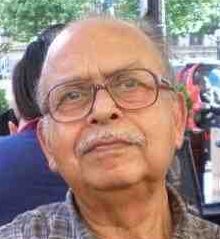
Tapas Sen was born in Kolkata (1934), and brought up in what now constitutes Bangladesh. He migrated to India in 1948, and joined the National Defence Academy in January 1950. He was commissioned as a fighter pilot into the Indian Air Force on 1 April 1953, from where he retired in 1986 in the rank of an Air Commodore. He now leads an active life, travelling widely and writing occasionally.
Editor's note: This article originally appeared on Air Commodore Sen's blog TKS' Tales. It is reproduced here with the author's permission. This is Part 1. Part 2 is available here.
My family
India saw tremendous political ferment in the in the late 1910s. The disappointment over the Montague-Chelmsford reforms of 1918 resulting in the diarchic Government of India Act of 1919 was converted to horror and anger by the passage of the Rowlatt Act, and the massacre at Jalianwalla Bagh on 13 April 1919.
A new form of protest - Satyagraha - was being tried out in India by Mahatma Gandhi. He channelled the fuming mass anger into the first massive truly national movement of non-cooperation. Many government servants left their jobs, and many students left their schools and colleges, as these were labelled as slave making factories.